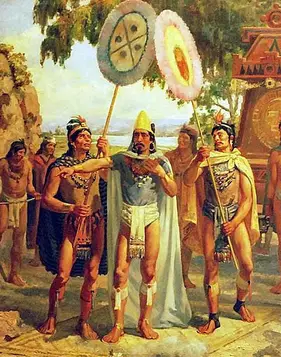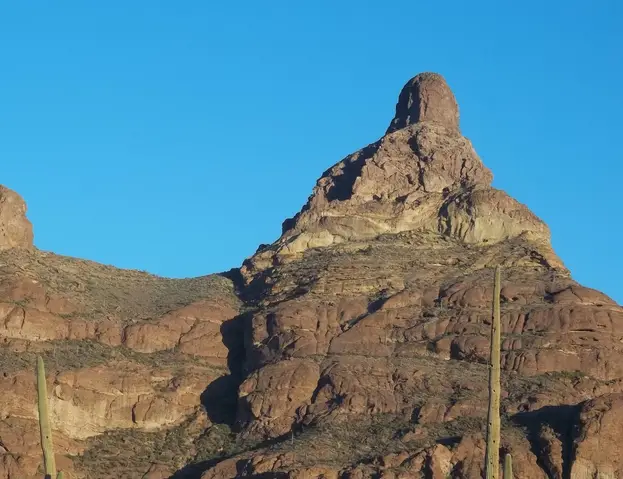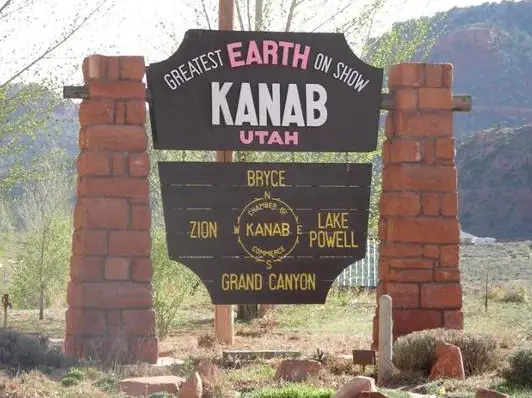Podcast: Play in new window | Download
Subscribe: Apple Podcasts | RSS
 Today, we’re diving into one of the most enduring legends of Mexico: the lost treasures of Emperor Montezuma the Second, the ruler of the vast Aztec Empire at the time of European contact. From the moment Spanish conquistadors set foot in Tenochtitlán, tales of Montezuma’s unimaginable wealth—gold, silver, and precious jewels—have sparked the imaginations of treasure hunters, historians, and dreamers. Some say his riches were hidden to keep them from Spanish hands, scattered across Mexico and beyond. Others claim they’re cursed, guarded by spirits or lost to time. Join us as we explore four captivating legends of Montezuma’s treasure. Grab your treasure map and compass, and let’s venture into the heart of Aztec mystery!
Today, we’re diving into one of the most enduring legends of Mexico: the lost treasures of Emperor Montezuma the Second, the ruler of the vast Aztec Empire at the time of European contact. From the moment Spanish conquistadors set foot in Tenochtitlán, tales of Montezuma’s unimaginable wealth—gold, silver, and precious jewels—have sparked the imaginations of treasure hunters, historians, and dreamers. Some say his riches were hidden to keep them from Spanish hands, scattered across Mexico and beyond. Others claim they’re cursed, guarded by spirits or lost to time. Join us as we explore four captivating legends of Montezuma’s treasure. Grab your treasure map and compass, and let’s venture into the heart of Aztec mystery!
Before we chase the gold, let’s set the stage. Montezuma II ruled the Aztec Empire from 1502 to 1520, presiding over a golden age of art, architecture, and power. His capital, Tenochtitlán—modern-day Mexico City—was a marvel of canals, temples, and palaces, glittering with wealth from tribute and trade. Gold ornaments, jade masks, and turquoise mosaics filled the emperor’s coffers, symbols of divine favor and imperial might. When Hernán Cortés and his conquistadors arrived in 1519, they were awestruck by this opulence, fueling their greed and igniting a conquest that would topple the empire.
But what happened to Montezuma’s treasure? Historical accounts, like Bernal Díaz del Castillo’s The True History of the Conquest of New Spain, describe Cortés seizing vast riches during the fall of Tenochtitlán in 1521. Yet, much of it vanished, perhaps lost in the chaos of the Spanish takeover, or hidden by Aztecs desperate to protect their sacred wealth. Legends grew out of the gaps in the historical record. These legends have endured for five centuries, with Montezuma’s name becoming synonymous with lost treasure across Mexico and the American Southwest. Let’s explore four of these tales.
Number One. Montezuma’s Head.
 Our first legend takes us to the rugged borderlands of what is now southern Arizona, near a striking rock formation known as Montezuma’s Head. During the Mexican War of 1846 to 1848, a group of Mexicans fleeing Apache raids reportedly hid a fortune in gold in a canyon near this landmark, which had not yet traded hands to the Americans. The story goes that the group, carrying wealth said to trace back to Montezuma’s palace, was ambushed by Apache warriors. Only one survivor escaped, clutching a map to the hidden cache. Decades later, in the 1880s, he returned to recover the gold but found the area still too dangerous, controlled by Apache bands. He died without reclaiming the treasure, and the map—if it ever existed—has never surfaced.
Our first legend takes us to the rugged borderlands of what is now southern Arizona, near a striking rock formation known as Montezuma’s Head. During the Mexican War of 1846 to 1848, a group of Mexicans fleeing Apache raids reportedly hid a fortune in gold in a canyon near this landmark, which had not yet traded hands to the Americans. The story goes that the group, carrying wealth said to trace back to Montezuma’s palace, was ambushed by Apache warriors. Only one survivor escaped, clutching a map to the hidden cache. Decades later, in the 1880s, he returned to recover the gold but found the area still too dangerous, controlled by Apache bands. He died without reclaiming the treasure, and the map—if it ever existed—has never surfaced.
This tale, like many Montezuma legends, blends historical plausibility with romantic allure. The border region was a hotbed of conflict during the 19th century, with Apache raids disrupting travel and trade. The idea of hiding gold in a remote canyon makes sense, and Montezuma’s Head, a natural landmark, would be a logical marker. But skeptics dismiss the story as “pure legend,” arguing there’s no evidence linking it to Montezuma’s actual wealth. Newspapers from 1895 mention alleged finds in the area, but nothing concrete has emerged. Today, Montezuma’s Head is part of Organ Pipe Cactus National Monument and treasure hunting is forbidden there. Still, the canyon’s labyrinthine depths and the enduring mystique of Emperor Montezuma keep curiosity seekers scouring nearby deserts, hoping to uncover Aztec gold.
Number Two. The Lake Texcoco Legend.
Our second legend brings us to the heart of the Aztec Empire: Lake Texcoco, the watery cradle of Tenochtitlán. According to this tale, during the Spanish siege of 1521, Aztec priests and nobles, foreseeing defeat, loaded Montezuma’s treasures—gold, silver, and sacred relics—onto canoes and sank them in the lake to keep them from Cortés. Some versions claim the treasure was hidden in a secret underwater cave, guarded by traps or even spirits. Others say it was scattered across the lakebed, lost as Tenochtitlán fell.
 This story has roots in historical accounts. During the Noche Triste on June 30, 1520, the Spanish fled Tenochtitlán under attack, losing much of the gold they’d looted when their boats sank or were abandoned. Aztec warriors, aware of the Spanish obsession with gold, may have hidden additional treasures to prevent further plunder. Lake Texcoco, though largely drained in modern times, was vast and deep in the 16th century, making it a plausible hiding spot.
This story has roots in historical accounts. During the Noche Triste on June 30, 1520, the Spanish fled Tenochtitlán under attack, losing much of the gold they’d looted when their boats sank or were abandoned. Aztec warriors, aware of the Spanish obsession with gold, may have hidden additional treasures to prevent further plunder. Lake Texcoco, though largely drained in modern times, was vast and deep in the 16th century, making it a plausible hiding spot.
In the 19th and 20th centuries, treasure hunters and archaeologists probed the lakebed, especially during drainage projects. In 1900, a Mexico City newspaper reported the discovery of gold artifacts near former remnants of the lake, sparking speculation about Montezuma’s hoard. But modern scholars, citing Díaz del Castillo and other chroniclers, argue that most of the Aztec wealth was either melted down by the Spanish or repurposed in post-conquest Mexico. Still, the idea of a sunken treasure endures, fueled by Mexico City’s ongoing archaeological finds, like the Templo Mayor’s offerings. Could Montezuma’s gold still lie beneath the urban sprawl? The mystery keeps the legend alive.
Number Three. The Kanab Cache: Montezuma’s Treasure in Utah
 Our third tale takes us north to Kanab, Utah, where a legend claims Montezuma’s treasure was spirited away from central Mexico entirely. According to this story, Aztec warriors, fleeing the Spanish conquest, transported a massive hoard—gold, jewels, and sacred artifacts—northward, hiding it in a cave or mine near Kanab Utah’s Three Lakes area. The treasure was meant to preserve the Aztec legacy far from Cortés’s reach. In the 1920s, a prospector named Freddy Crystal claimed to have found a cave with Aztec markings near Kanab, sparking a treasure-hunting frenzy. Crystal’s search yielded no gold, but locals still report strange symbols and mysterious tunnels in the region.
Our third tale takes us north to Kanab, Utah, where a legend claims Montezuma’s treasure was spirited away from central Mexico entirely. According to this story, Aztec warriors, fleeing the Spanish conquest, transported a massive hoard—gold, jewels, and sacred artifacts—northward, hiding it in a cave or mine near Kanab Utah’s Three Lakes area. The treasure was meant to preserve the Aztec legacy far from Cortés’s reach. In the 1920s, a prospector named Freddy Crystal claimed to have found a cave with Aztec markings near Kanab, sparking a treasure-hunting frenzy. Crystal’s search yielded no gold, but locals still report strange symbols and mysterious tunnels in the region.
This legend, one of the most famous in the American Southwest, reflects the cultural diffusion of Montezuma’s myth. The Aztecs had extensive trade networks, reaching into what is now the U.S., and some scholars suggest they may have explored northern regions. However, there’s no definitive evidence of an Aztec presence in Utah, and the Kanab story likely grew from 19th-century romanticism about “lost civilizations.” Skeptics wonder how an uneducated American prospector would even know what supposed “Aztec markings” looked like, and that he was mistaking ancient petroglyphs or natural formations for something else.
Despite the skepticism, the Kanab legend persists, amplified by modern treasure-hunting shows. The area’s rugged terrain, with its hidden caves and red-rock canyons, fuels speculation. Curious wealth seekers still comb the region, drawn by the tantalizing idea that Montezuma’s priceless riches lie just beyond the next ridge.
Number Four. The Curse of Montezuma’s Cave: A Chiapas Mystery
Our final legend takes us to the jungles of Chiapas, where a cave near the ancient Maya city of Palenque is said to hide Montezuma’s treasure. According to local lore, Aztec emissaries, sent by Montezuma before his death, hid a fortune in gold and jade in a booby-trapped cave to protect it from the Spanish. The treasure is said to be cursed, with spirits or traps ensuring that only a “worthy” seeker—perhaps a descendant of Aztec nobility—can claim it. In the 18th century, a Spanish soldier allegedly found the cave but died in a collapse, reinforcing the curse’s reputation.
 This story blends Aztec and Maya elements, reflecting Chiapas’s cultural crossroads. Palenque, a Maya city, had no direct connection to Montezuma and had collapsed centuries before the Aztecs rose to power. The Aztecs did trade with Maya regions after Classic Maya civilization faded, and the idea of a shared indigenous resistance to the Spanish resonates in local folklore. The cave’s location remains vague, with some claiming it’s near the Usumacinta River, others pointing to vague locations in the dense jungle. In the 1960s, a Mexican archaeologist reported finding pre-Columbian artifacts in a Chiapas cave, but no treasure was confirmed, and the artifacts were not Aztec.
This story blends Aztec and Maya elements, reflecting Chiapas’s cultural crossroads. Palenque, a Maya city, had no direct connection to Montezuma and had collapsed centuries before the Aztecs rose to power. The Aztecs did trade with Maya regions after Classic Maya civilization faded, and the idea of a shared indigenous resistance to the Spanish resonates in local folklore. The cave’s location remains vague, with some claiming it’s near the Usumacinta River, others pointing to vague locations in the dense jungle. In the 1960s, a Mexican archaeologist reported finding pre-Columbian artifacts in a Chiapas cave, but no treasure was confirmed, and the artifacts were not Aztec.
The curse element, a common motif in treasure tales, may stem from indigenous stories meant to deter looters. Mexico’s archaeological laws, strengthened in the 20th century to protect sites like Palenque, add a modern “curse” for would-be treasure hunters: legal consequences. Yet, the jungle’s dense cover and ancient ruins keep this legend alive, drawing adventurers who dream of outwitting Montezuma’s traps and what are perceived as silly and superstitious curses.
These are just four of the legends and there are many more depending on time and location. Why do these stories captivate us? Montezuma’s treasure legends are more than tales of gold; they’re stories of resistance, loss, and hope. They reflect the Aztec Empire’s tragic fall, the ingenuity of those who hid their wealth, and the enduring dream of reclaiming a lost legacy. From Arizona’s canyons to Lake Texcoco’s depths, from Utah’s deserts to the jungles of Chiapas, these tales span borders and centuries, blending fact and fantasy.
Are the treasures even real? Historical records confirm the Aztecs’ wealth, but much of it was looted or lost during the conquest. Ongoing archaeological finds, with valuable artifacts turning up, suggest some riches were hidden, but grand hoards like those in the legends lack hard evidence. Skeptics and mainstream academics argue that Montezuma’s treasure is a cultural myth, born of colonial greed and indigenous pride. Yet, occasional discoveries like gold trinkets and other ancient artifacts keep the dream alive.
For those tempted to search, a warning: Mexico’s archaeological sites are protected, and unauthorized treasure hunting can lead to severe penalties. The real treasure may be the stories themselves, preserving the spirit of a civilization that refused to vanish. So, whether you’re in southern Arizona, Mexico City, Utah, or Chiapas, keep your ears open for whispers of Montezuma’s gold, and your heart open to the mystery.
REFERENCES
Díaz del Castillo, Bernal. The True History of the Conquest of New Spain. London: Hackett Publishing Company, 2012. We are Amazon affiliates. Get the book on Amazon here: https://amzn.to/3G6WPEO
